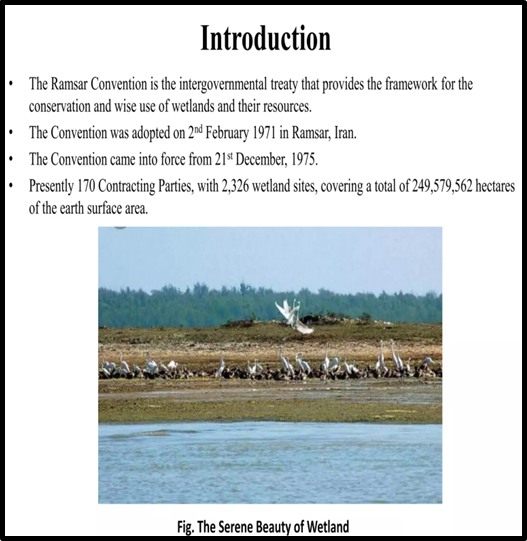INDIA ADDS THREE MORE RAMSAR WETLANDS
Why in the news?
India’s total Ramsar sites now reach 85, with new additions in Tamil Nadu and Madhya Pradesh, enhancing conservation efforts and boosting international visibility and tourism potential.
About three New Ramsar Wetlands Added in India:
- The Indian Environment Ministry has announced the addition of three new Ramsar wetland sites.
- The newly designated sites are Nanjarayan and Kazhuveli bird sanctuaries in Tamil Nadu and Tawa reservoir in Madhya Pradesh.
- This addition increases India’s total number of Ramsar sites to 85, covering 1,358,068 hectares.
Historical and Current Context:
- India, a signatory to the Ramsar Convention since 1982, had 26 Ramsar sites from 1982 to 2013.
- From 2014 to 2024, 59 additional wetlands were added to the Ramsar list.
- Tamil Nadu has the highest number of Ramsar sites (18), followed by Uttar Pradesh.
source:scribd
| About Nanjarayan Bird Sanctuary:
Location: Nanjarayan Lake, northeastern Uthukuli Taluk, Tiruppur District, Tamil Nadu; 10 km north of Tiruppur city. Size: 125.865 hectares; falls under Sarkar Periyapalayam and Neruperichal villages.
About Kazhuveli Bird Sanctuary:
About the Tawa reservoir:
|





